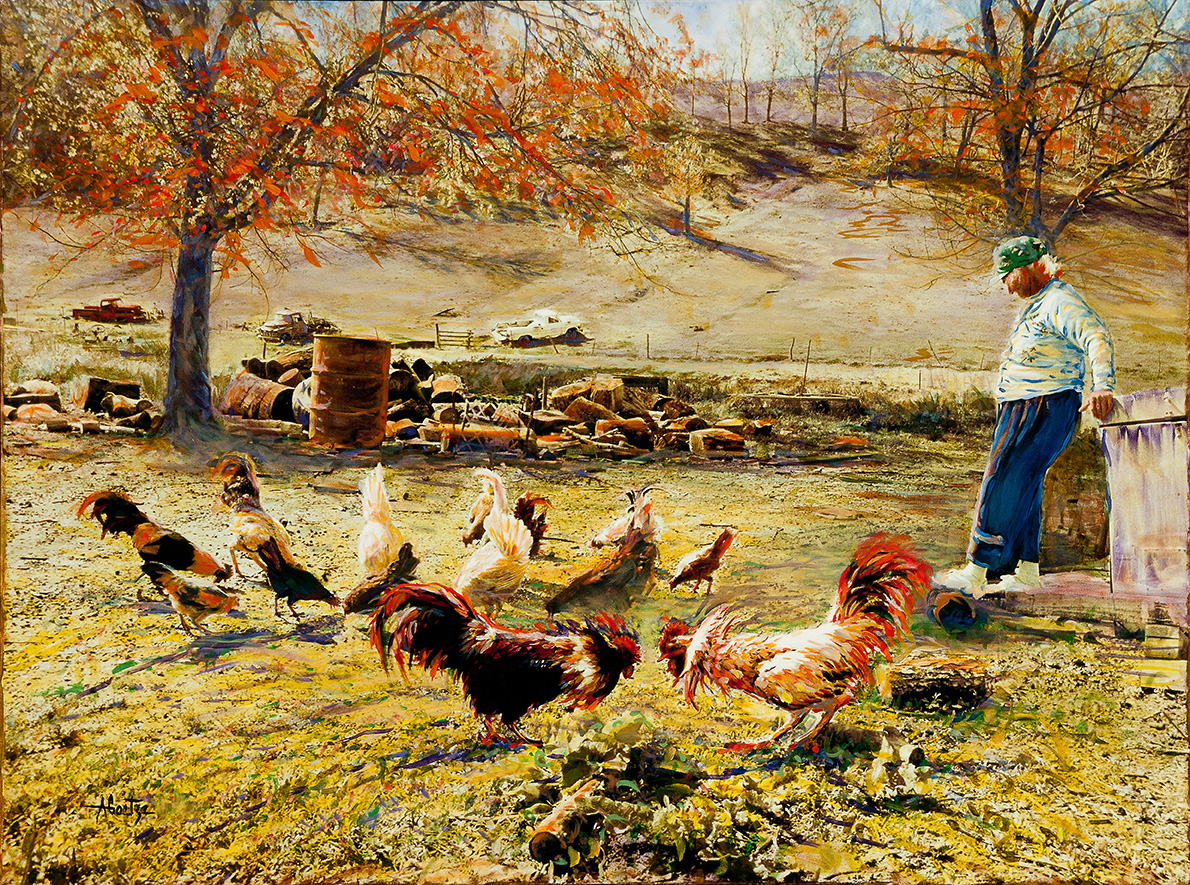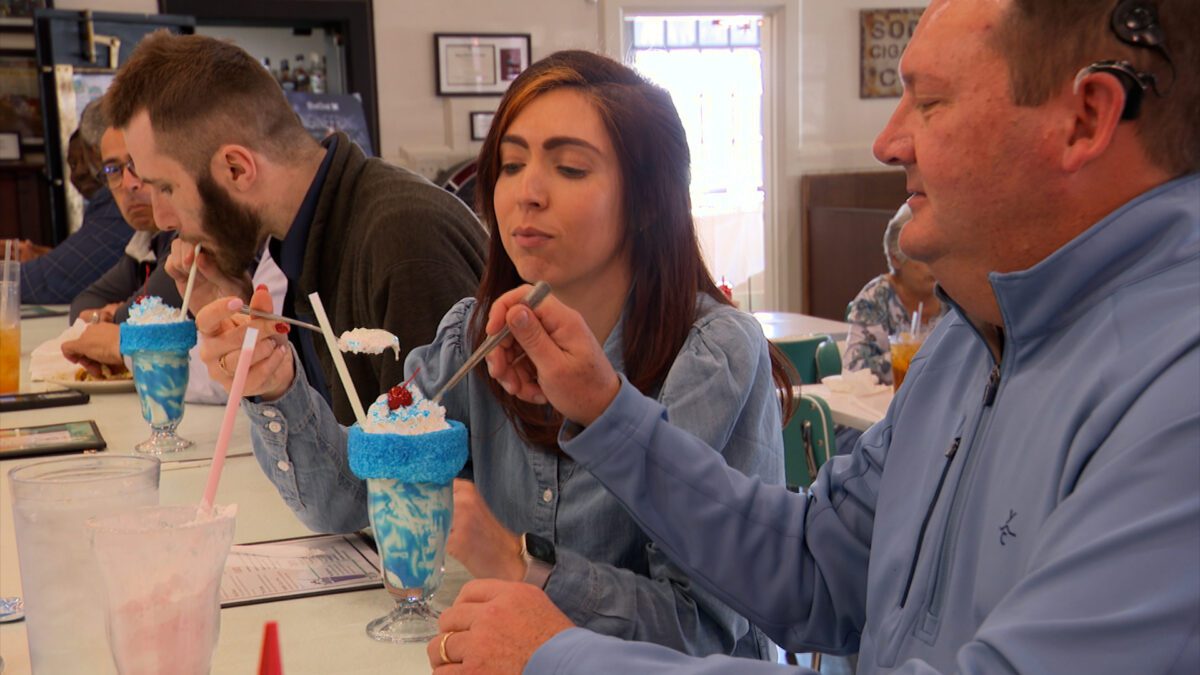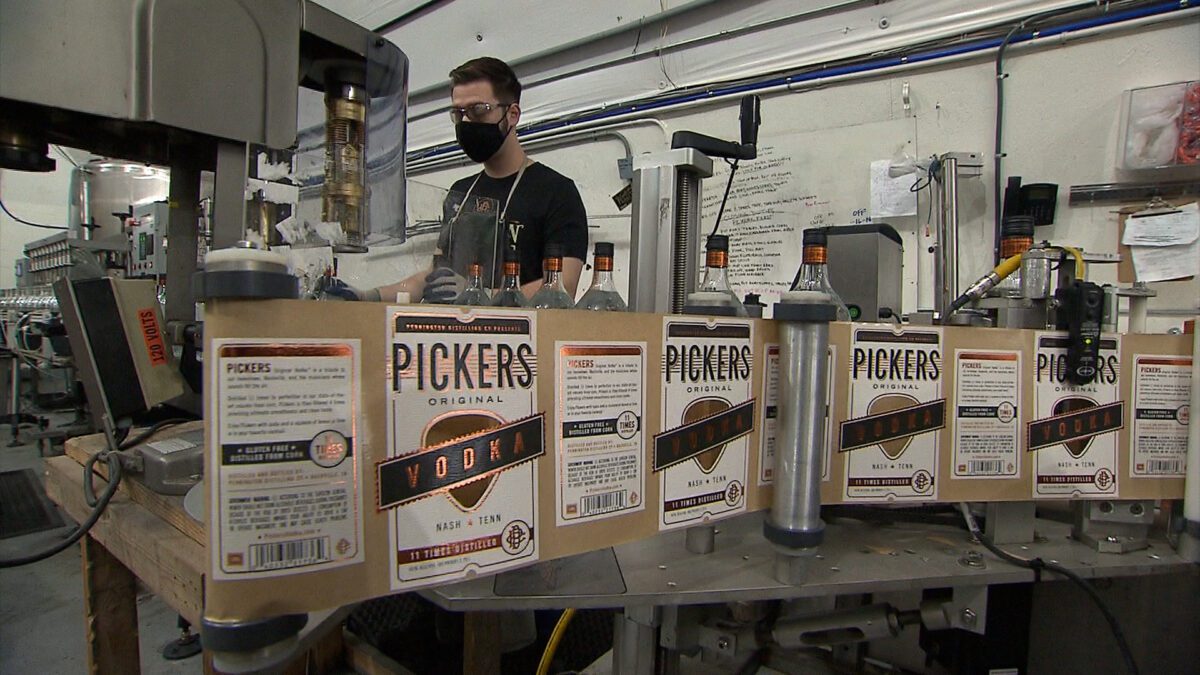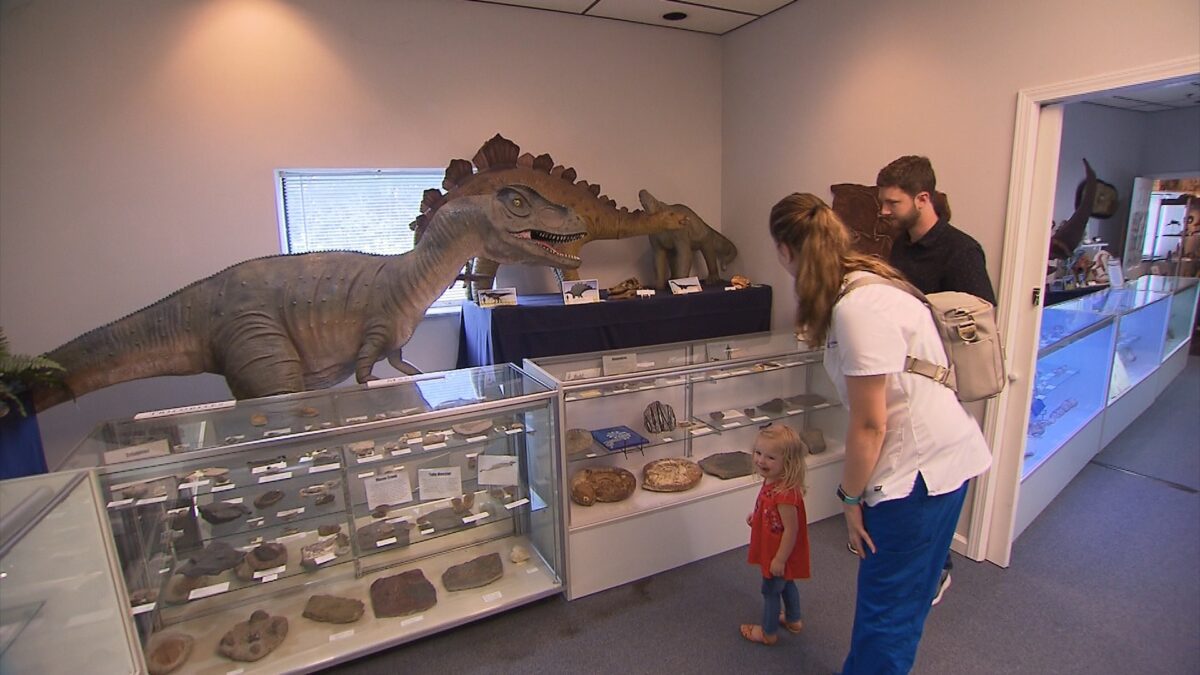Episode 3733
Don't have the PBS App? Click Here
Episode Transcript
- [Narrator] Tennessee Crossroads is made possible in part by... - [Phil] I'm Tennessee Tech President Phil Oldham. Here in Cookeville, Tennessee's college town, we are bold, fearless, confident, and kind. Tech prepares students for careers by making everyone's experience personal. We call that living wings up. Learn more at tntech.edu. - [Narrator] Discover Tennessee Trails and Byways. Discover Tennessee's adventure, cuisine, history, and more made in Tennessee experiences showcased among these 16 driving trails. More at tntrailsandbyways.com. - This time on Tennessee Crossroads, we'll visit a place in Brownsville where a milkshake is just what the doctor ordered. Then meet a Williamson County artist with a special mission of conservation, we'll explore an award-winning Nashville Distillery, and finally visit a Murfreesboro Museum of Nashville History. Well, that is what we have for you this time on Tennessee Crossroads. I'm Joe Elmore. Have you ever had one of those days when a rich, thick milkshake sounds like perfect medicine? Well, coming up in our first story, Miranda Cohen travels to Brownsville to visit a place where the local doctor just might agree with you. Upbeat music - [Miranda] Big juicy cheeseburgers, bacon and eggs, and the perfectly crafted banana split. If your doctor is telling you to stay away from these treats, you might be seeing the wrong doctor. - He's the only one I try to run off, and he keeps coming back. - [Miranda] Meet Dr. Jack Pettigrew, once a family practitioner here in Brownsville. Now he is the owner of Livingston Soda Fountain and Grill. - Most all the people that come in here that are from Brownsville, at some point I interacted with them in the medical practice, and they laugh at me because now I tell 'em, I say now all those things I told you when you were coming to the clinic about, you can't have this and don't eat that and avoid this. I said, that's all out the window. Now you can eat anything you want. Milkshakes are good for you. - [Miranda] Dr. Pettigrew's father and grandfather were both pharmacists right here in Brownsville. You can see lots of old reminders from the pharmacy, but young Jack's favorite part of the drugstore was the soda fountain. - I remember as a child going to the soda fountain, getting the cherry coat. - [Miranda] As the times changed, all of the lunch counters were replaced with greeting cards, but he never forgot the high countertops or malts from his youth. - It broke my heart, but I always wanted to bring that back. - [Miranda] Pettigrew followed in his family footsteps and became a pharmacist and came back to work at his dad's pharmacy. Then came a little inspiration from the man upstairs, the doctor living above the drugstore to be exact. - My dream was to always be the small town doc that I knew that was above my dad's drugstore. I admired him. He was kind of one of those guys that you just watched him work and kind of wanted to be like that. - [Miranda] After nearly 40 years of a successful medical practice, Dr. Pettigrew was ready to revisit his nostalgic love of those old soda fountains. So he purchased one of the town's landmarks, Livingston's Furniture Store, and turned it into an old fashioned soda shop with a modern twist. The concept may be from a bygone era, but Livingston Soda Shop is state of the art with lots of glass and retro teal and gray. - I knew some things I did not want. I knew I did not want harsh red color. I knew I wanted something warm and inviting. I just wanted it to be a family friendly atmosphere. Really, the 50s theme. - So my wife was gracious enough to let me live out this dream. We wanted to do something that would kind of stimulate minds a little bit. - [Miranda] The Pettigrews wanted to fill their menu with homemade sandwiches, salads, wraps, and of course, it couldn't be a soda fountain without a Triple Decker club. - When I judge a restaurant by its club sandwich, right, classic club sandwich and their bacon is amazing. - [Miranda] And remember, this is not your grandfather's soda fountain. They also serve up shrimp and grits, Nashville hot chicken and steak. - We've got about five different burgers. Livingston Burger, we kind of fancied up with jalapeno, pimento cheese and candied bacon. That's a big seller. We have a Southwest burger. We have, of course, the Patty melt is kind of a burger, its own rye bread, but the old time burger is just a hamburger with all the trims, the lettuce, tomato, mayo, pickle, mustard, onion, and that is our number one. I'm not talking about number one burger seller. It's our number one item in the restaurant. - Here at Livingston Soda Fountain, you know you're going to have a great milkshake, but be sure to have one of the specialty milkshakes on the menu. There are several of them, and they are all named for a person or place here in Brownville. Take this one for example. It is called The Dandy, and it is named after Jack Pettigrew's dad. It is chocolate, caramel and candy. - We sat down and talked about things in Haywood County that might be fun to attach a milkshake to. And so that's where we got the Muddy Hatchie River, which is chocolate, chocolate, chocolate, chocolate. My wife put her thinking cap back on again, ended up coming up with the Blue Oval made out of birthday cake ice cream for the birth of Blue Oval City. - [Miranda] A malt, a homemade pie or a big scoop of ice cream, it is all just what the doctor ordered, and no one here is counting carbs or calories. The only real advice is to relax and enjoy. - The food is great, the service are great. It's just a great vibe. - It's been amazing, and I spend a lot of my time on the floor talking to people and that's a lot of fun. We had no idea it would be this busy, this fast. The whole West Tennessee has been wonderful to us. Brownsville particularly, we've got people that come two and three times a week, which is to me amazing. - And on any given day, Brownsville was a small town. Everybody knows everybody, but I walk out there and I do not know one person in our restaurant, and you will go visit those tables and they'll say, we drove from Dyersburg, we drove from Memphis, we drove from Jackson. So, I mean, it's really neat, so I feel like we've kind of become a destination stop for people. Upbeat music ends - Thanks, Miranda, next, we're gonna be the Middle Tennessee artist whose work reflects her profound passion for nature and its preservation. Anne Goetze uses paint, photography and even filmmaking to create inspiring, even whimsical works of art. introspective music - We have the Tennessee Hills back there, those blues, and then there's that field that has the gold on it. camera shutter click - [Joe] Anne Goetze is an accomplished Tennessee photographer, painter and filmmaker. Her subject matter is often the life and landscape of her surroundings here in Williamson County. - Nature can influence us in a very profound way. Sometimes we just don't even realize it unless maybe we're away from that and then you get around it and then you start to feel that peace or that influence or your appreciation for the beauty of it. upbeat music - [Joe] She grew up in a family of five girls and her father Ray was an avid photographer. So it's no wonder that Anne inherited his passion for capturing through a lens. However, painting would also share an equal billing. Her style combines plein air, which simply means painting outdoors and impressionism. She also worked as a photographic touch of artists for years, and that somehow led to her special technique of combining photography with painting. This one's called Ellie and Her Chickens, and this is one of Anne's favorites she calls Hillbilly Happy Hour. - But you're starting with that basis of the black and white but it was fiber-based paper. What you want to be a painting, and then what you want it to be photographic so then you don't know which one it is. Hopefully some of them you're looking at going, well, that looks like a photograph. Well, it is. It looks like a painting. Well, it is. - [Joe] Anne's work has been displayed at galleries and art shows throughout the country. One popular photo and paint series she created was all about clothes lines. - We grew up with a clothes line, and some people out in this rural area, they still use the clothesline and if you travel to other countries, they use a clothes line. It's just a very normal thing, but now it doesn't seem here in the United States like it's normal, but it should be. We all have like, I'm sure, a couple trees. You could tie rope to put clothes out there. Save on your electric bill, save on the resources of the earth. Save your clothes, they last longer, they smell fresh. - [Joe] Years ago, Anne had a true life changing experience when she traveled to the village of Annecy, France. That's where her aunt lived as a nun at the Sisters of the Visitation monastery. - And so I was able to start visiting her and all these little layers started either coming off or opening up to like another world. So I had a lot of respect for her always, but then I got an insight into what that life was really like, because they're behind walls. They live behind the walls, but they have joy, a lot of joy. They're still in the long black habits, and they have the vow of poverty, which means that they don't own anything materialistically. They don't even own the crosses that they wear. They trade them out every year. - [Joe] Her visits to the monastery resulted not only in an art series, but also a recent book titled Pray to Love. Where'd that title come from? - That's one of their mottos. The full motto is pray to love, love to pray. They have a lot of great little mottos, beauty will save the world. - [Joe] As if painting and photography weren't enough, Anne Goetze is also a filmmaker. Her devotion to nature and preservation was captured in a documentary she produced called The Living Land. - [Narrator] It is the very fabric of our lives. The living land is a seasonal journey inviting us to reconnect and fall in love with nature, while encouraging and helping us become more active in protecting and conserving the resources of this earth for future generations. - If not one organization owns it, then other people can use it, and that is gonna be the thing that would inspire our children maybe that they are in a neighborhood and they can watch that and really let nature sink into them because that's imagination. - [Joe] She'll move on to other projects that will delight and invigorate her audiences, always on the lookout for new subjects for creative expression, with no plans to ever put down her camera or her paintbrushes. - I just think that I'm living what I want to do so I don't have some maybe pie in the sky, it's like here. It makes us be present in the moment, right? It's like, okay, this is great. I've been wanting to do this. Thank you God for giving the opportunity and opening doors and I'm just really thankful. - Tennessee whiskey has never been more popular and with the growing number of craft distilleries in the state, well people are embracing it more than ever. Laura Faber takes us to a Davidson County distillery that's making award-winning spirits with a great love story behind it. sounds of bottles filling upbeat music - [Laura] There hasn't been a better time to be making whiskey in Tennessee. First of all, it's legal again. Second, more people than ever are rediscovering this spirit. - Not just your males, it's your females. It's all multiple genders and races and internationally. I mean, American whiskey is growing outside the US as well. I think we used to be seen as a subpar product of scotch. American bourbon and Tennessee whiskey. I think people now realize, oh no, it's just as complex. It's just as good. - [Laura] Jeff and Jenny Pennington are the owners of Pennington Distilling Company based in West Nashville. Once the state law changed in 2009, allowing legal distillation again, they knew they had to give their dream of making whiskey a chance. - Came across some photos the other day of Jeff in this room when it was stark white, there wasn't one piece of equipment, there was not one employee. I mean, it was just the two of us and those moments really put it in perspective to look back and just think how far we've come and how we've built this great team around us and a whole portfolio of a brands now. - [Laura] It's a real love story. Jeff and Jenny were high school friends from Franklin. They then worked for competing liquor distributors after college and hid their romance for a long time. Eventually they married and are now on the journey of a lifetime. Their own brand of whiskey was the goal, but that takes five to seven years. - We knew we wanted to make whiskey. We needed something we could use younger whiskey in. So we thought, okay, if we create like a Tennessee whiskey cream liqueur, it could allow us to use younger whiskey while we're letting it age. - It's cash flow. Getting to the whiskey business is not easy. It's an expensive proposition if you want to do it what we think is the correct way and tradition. Our values here is craftsmanship, quality and heritage. Patience is important in whiskey. I've tasted a lot of craft whiskeys all over the country that say they do this or they do that, or they to try to age it faster. I've yet to taste anything myself that cheats time. - [Laura] They also distill two types of vodka along with mini vodka products. The picker's brand has ridging on the side of the bottle to mimic guitar frets, an ode to Music City. The premium Walton's vodka was named after Jenny's late father. - One day when we decided to actually get in the vodka business, we purchased the vodka still and everything and we said we really could try to make Walton's finest vodka in a weeded recipe. That was what he preferred to drink. It definitely has a different taste profile. So we went through 100 prototypes it felt like, and he had a book. He'd write it down, rate them, and finally on the 99th one, he said, oh, he would compare it to his vodka of choice. And he thought he was once again, nope, the Walton's isn't there. I'm selecting the one I always pick and he realized that he had chosen the Walton's over what he had drank for years. That was an exciting moment. - [Laura] The goal has always been to create original craft spirits that reflect the character of Nashville and Tennessee. They give back a portion of revenue to local charities that support musicians, cancer research, animals and more. And all their grain comes from the local Renfrow farms. - We get our Tennessee white corn and our red winter wheat and our white silver rye from them. And then when we're done with it, the mask goes right back to local farmers to feed hogs and cows. - [Laura] Nearly every part of the process happens on site. The grain is milled here, then cooked, distilled, aged and bottled. Carter Collins is the master distiller and tour guide. - Step one, we're taking grain and we're grinding our grain in, putting it in our cooker where we're able to heat it and that enables us to convert the starches in the grain to formidable sugars. - After this, it goes here. - We'll transfer it into our fermenters and we'll add yeast and they'll set in the fermenters for three to four days. The yeast will consume those sugars and the byproduct is alcohol and CO2. - Alright, from here, it goes to the beautiful still. - When we put it in the still, this enables us to extract the alcohol from the mash. By putting in the still, heating it up, the alcohol evaporate, come up, condense, and what comes out at the end is new-made whiskey. So this is what goes in the barrel. - And it's white, no color yet to it, nothing. - No color, the barrel will give it the color over time. - We hope when someone picks up a bottle at Kansas City or LA or Chicago or Louisville, that they're not just buying another product, they're buying a little bit of Nashville and a piece of Nashville and Tennessee. And so when they come through, we wanna make 'em not just a fan of our brands, but a fan of our industry and a fan of our heritage. - [Laura] It's a love story that keeps on giving, and you can experience it too. - When you hear the term Museum of Natural History, you might think of Washington DC, New York, or even London, but what about Murfreesboro? Yeah, Middle Tennessee has its own museum of natural history and has had since 2014. Cindy Carter uncovered this gem and brings us the story. - [Cindy] If it's true, we are known by the company we keep-- - Mastodons and mammoths, which were running around in Tennessee. - [Cindy] Then Alan Brown is one ferocious and fascinating guy. - So this is a edmontosaurus femur that I dug up. - [Cindy] Alan spends his days hanging out with his prehistoric pals like T-Rex, velociraptor, and lots of others who are harder to pronounce. - So this slightly reddish colored dinosaur is called a suchomimus, possibly one of the fastest dinosaurs. If you look, he's got really long legs. He's really lightly built. - [Cindy] This savvy science guy, passionate paleontologist, is also the executive director of Earth Experience. - I have always been absolutely in love with natural history museums, and it was a natural history museum that got me interested in science in the first place. - [Cindy] And in 2014, that love affair led Alan to open this natural history museum in Murfreesboro, Middle Tennessee's very first. - Tennessee has a huge natural history component to it. We have lots of minerals, especially from Tennessee. There's giant calcite crystals and purple fluorite crystals. Mineral collectors just love it. We have things from the Ice Age, saber tooth cats like the one that was found in Nashville that the Predators hockey team is based off of. - You can add red pandas, mosasaurus, and giant sea turtles to that Tennessee list. But this experience also includes gemstones and fossils from all over. Inside the museum's paleo lab, patrons can watch Alan carefully chip debris away from one of the numerous bones he's dug up over the years in places like Montana. - Picking and brushing away small bits at a time. It's a very slow process. It can take years of work to clean an individual bone. - [Cindy] Thanks to Alan's annual summer dinosaur digs, much of what you see on display is the real deal, but the museum also molds and casts replicas, really good ones, right down to the smallest details. - This has been a passion of mine my whole life. - [Cindy] Volunteer Jim Kelsey shows us how he recreates a velociraptor skull from a mold of an original fossil. - Every detail of the original will be formed when we put the cast in. - [Cindy] The presto, change-o moment only takes a few minutes, and once it happens, the piece can either be sold to patrons wanting to take some of this experience home or become part of the museum's impressive dino display. - This is the only copy of these dinosaur tracks in existence anywhere in the world. - Not for nothing, it is called Earth Experience. It just doesn't feel like a museum in large part because of displays like this one where people can dig in and learn about topography and landscapes and watersheds. They can literally get in there and have a hands-on experience. - Like a drum. - [Cindy] As impressive as this collection is, Alan says he has four times this in storage, the small museum displays only what it currently has space for. - We heat it up and we gotta get it all hot enough to where it's still melting and still we just melted salt. - [Narrator] From gemstone making to guided tours. - Igneous rocks are rocks from a volcano. - They look like crystals. - [Cindy] Dedicated volunteers and donations keep this experience alive. No outside funding, no corporate sponsors. Just unbridled enthusiasm for science. - The world needs more scientists. There's always a shortage of scientists, especially some of the sciences like geology, where there are more jobs than there are geologists to fill them. And so natural history museums, more than anything else, get people interested in science. - [Cindy] Alan well understands what gets people excited. Books and movies help stimulate a curiosity for specific creatures like pterodactyls, wooly mammoths, and yes, game of Thrones fans, dire wolves. - Dire wolves were running around with all of the other things that have been found in Tennessee. There's a pretty good chance dire wolves were in Tennessee. - [Cindy] But once inside this museum, Alan Brown and his merry band of volunteers hope people discover so much more than they ever expected, a new experience from this Earth Experience. - Well, that's gonna have to do it for this edition of Tennessee Crossroads. Thanks for joining us. Don't forget to visit our website from time to time, Tennesseecrossroads.org and while you're there. You can download that PBS app. By the way, we will be on next time. We'll see you then. - [Narrator] Tennessee Crossroads is made possible in part by-- - [Phil] I'm Tennessee Tech President Phil Oldham here in Cookeville, Tennessee's college town. We are bold, fearless, confident, and kind. Tech prepares students for careers by making everyone's experience personal. We call that living wings up. Learn more at tntech.edu. - [Narrator] Discover Tennessee Trails and Byways. Discover Tennessee's adventure, cuisine, history, and more made in Tennessee experiences showcased among these 16 driving trails. More at tntrailsandbyways.com.
Tennessee Crossroads
April 11, 2024
Season 37 | Episode 33
Miranda Cohen visits a place in Brownsville where a milkshake is just what the doctor ordered. Joe Elmore meets a Williamson County artist with a special mission of conservation. Laura Faber explores an award winning Nashville distillery. And Cindy Carter visits a Murfreesboro museum of natural history.




